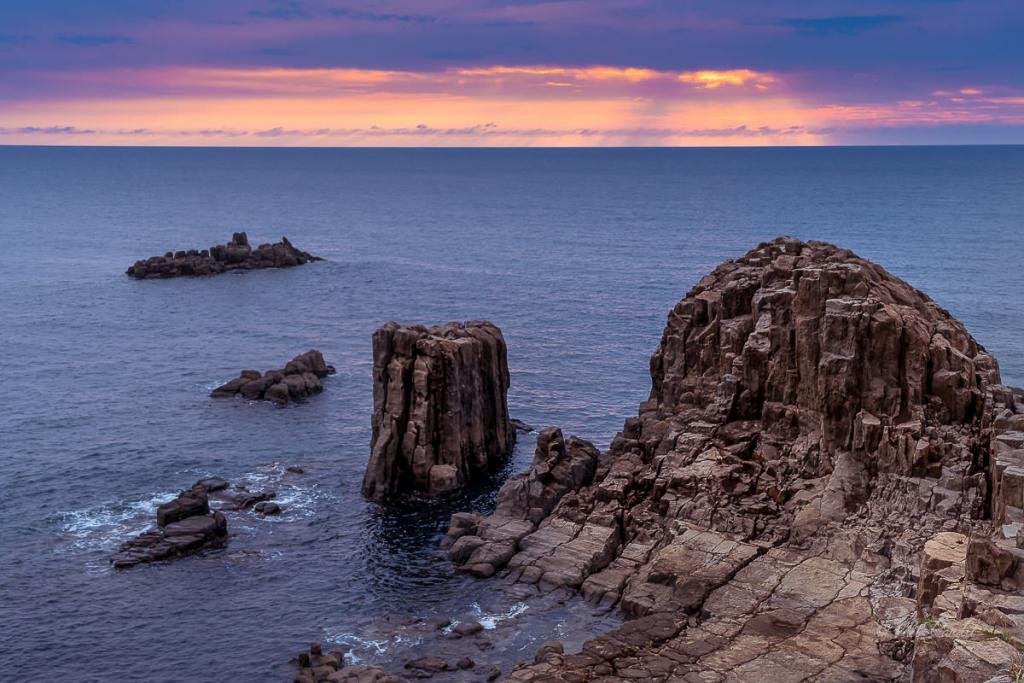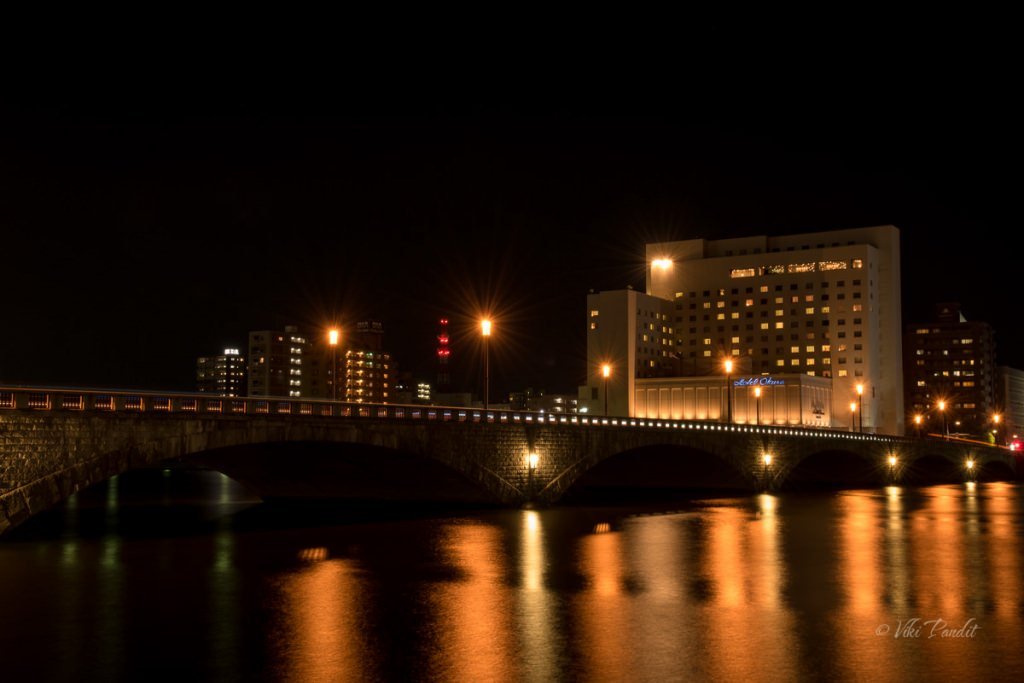Gifu Castle is a castle located in the city of Gifu, Gifu Prefecture, Japan. Along with Mount Kinka and the Nagara River, it is one of the main symbols of the city.
Chūbu

The thrilling Tojinbo Cliffs
Tojinbo Cliffs enjoy the dubious distinction of being the most loved suicide spot in Japan. For the wandering souls like me, the enthralling, rugged cliffs eroded by the raging waves of the Sea of Japan combined with the mesmerizing sunset is certainly more than likely to cause skipped heartbeats.

An evening along Bandai Bridge
Bandai Bridge is considered as the symbol of Niigata and is one of the city’s most scenic spots, especially at night. After dropping our luggage at the hotel, we walked down to the bridge from the Showa period, lit up like a Christmas tree over the Shinano River. The 1964 quake shattered Niigata, but the arch shaped, stone bridge stood strong among the rubble even as everything around it crumbled.
